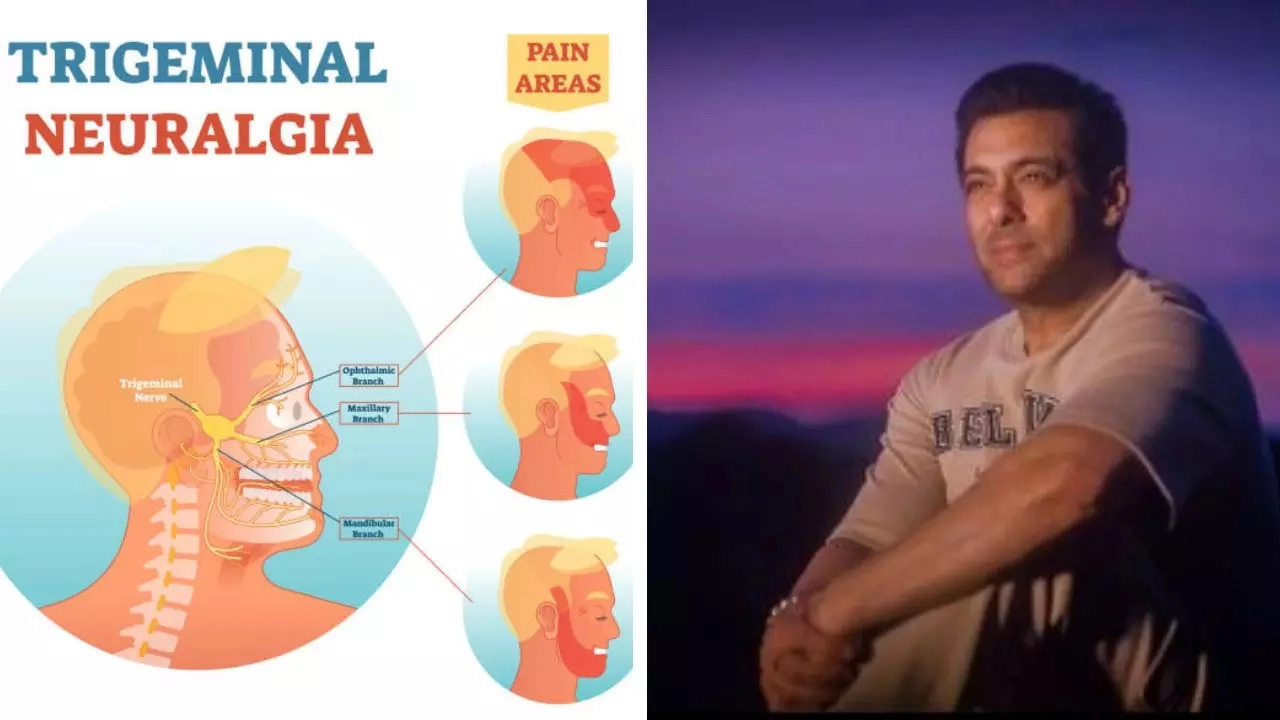News
What Is Trigeminal Neuralgia, The Suicide Disease Which Salman Khan Was Once Diagnosed With

Experts say that even though most cases are diagnosed between the ages of 50 and 70 years, it also occurs in younger individuals - including children
Often referred to as the “suicide disease” due to its excruciating pain, Trigeminal Neuralgia is a chronic condition that affects the trigeminal nerve. This nerve is responsible for transmitting sensations from the face to the brain and spreads across the cheeks, jaw, lips, and nose. “When triggered, the condition causes intense, shock-like pain that can feel unbearable. While the pain associated with trigeminal neuralgia can be intolerable, various treatment options are now available to manage and alleviate symptoms,” Dr. Anurag Saxena, Cluster Head Delhi-NCR - Department of Neurosurgery, Manipal Hospital Dwarka, told Times Now.
According to estimates, the condition affects an estimated 12 per 100,000 people annually, with the risk increasing as you age. Experts say that even though most cases are diagnosed between the ages of 50 and 70 years, it also occurs in younger individuals - including children. “Due to frequent misdiagnosis, the actual prevalence may be higher,” Dr. Saxena added.
Symptoms of Trigeminal Neuralgia you need to watch out
While the key symptom of trigeminal neuralgia is a severe, stabbing pain that occurs on one side of the face, typically around the eyes, cheeks, lips, and lower jaw, it also leads to electric shock-like jolts lasting a few seconds to minutes. It is mostly triggered by simple activities such as brushing teeth, chewing, drinking, shaving, or exposure to wind, making day-to-day activities very challenging for those affected. A few other sensations that you may feel in between pain attacks include:
- Burning
- Throbbing
- Numbness
- Dull achiness
What causes Trigeminal Neuralgia?
In general, pressure on or damage to your trigeminal nerve causes the condition. According to doctors, it is categorized based on the specific cause:
Primary or classic
It happens when a blood vessel pushes on part of the trigeminal nerve root
Secondary
It happens when another condition damages or affects your trigeminal nerve, like a tumour or multiple sclerosis. Doctors say those who suffer from the secondary type are more likely to be younger and have pain on both sides of their faces.
Idiopathic
Doctors diagnose idiopathic when there is no clear cause of your facial pain after doing diagnostic tests.
What are the treatment options for Trigeminal Neuralgia?
According to Dr. Saxena, a few ways you can treat this painful and debilitating condition, include:
Medications
Anticonvulsants - medicinal drugs typically used for epilepsy, can help control nerve impulses and reduce pain. Also, muscle relaxant medications like baclofen help relieve spasms that may contribute to trigeminal neuralgia.
Surgical Interventions
Microvascular Decompression is a microscopic procedure that involves relocating or removing blood vessels compressing the trigeminal nerve, providing long-term relief from the pain. This is a definitive procedure with a high chance of a permanent cure for pain.
Nerve Blocks
Percutaneous Rhizotomy is a minimally invasive procedure where part of the trigeminal nerve is intentionally damaged to block pain signals. Also, radiofrequency ablation, a procedure where heat is used to selectively destroy part of the trigeminal nerve, offering temporary pain relief can be used.
Get Latest News Live on Times Now along with Breaking News and Top Headlines from Health and around the world.
Our Blogs
Our Recent News

What Is Journavx, A New Non-opioid Pain Reliever Approved By FDA in Decades?
The composition of Journavx is completely different from opioids, which bind to receptors in your br...

THIS Simple Morning Mouth Ritual Can Significantly Reduce The Risk of Stroke
Once a week flossing can down the risk of ischemic stroke, cardioembolic stroke, and atrial fibrilla...

Suffering from Bad Back Pain? Acupressure Mat Can Come To The Rescue, Here's How
The mat brings a lot of comfort, especially for those suffering from debilitating back pain Acupress...

